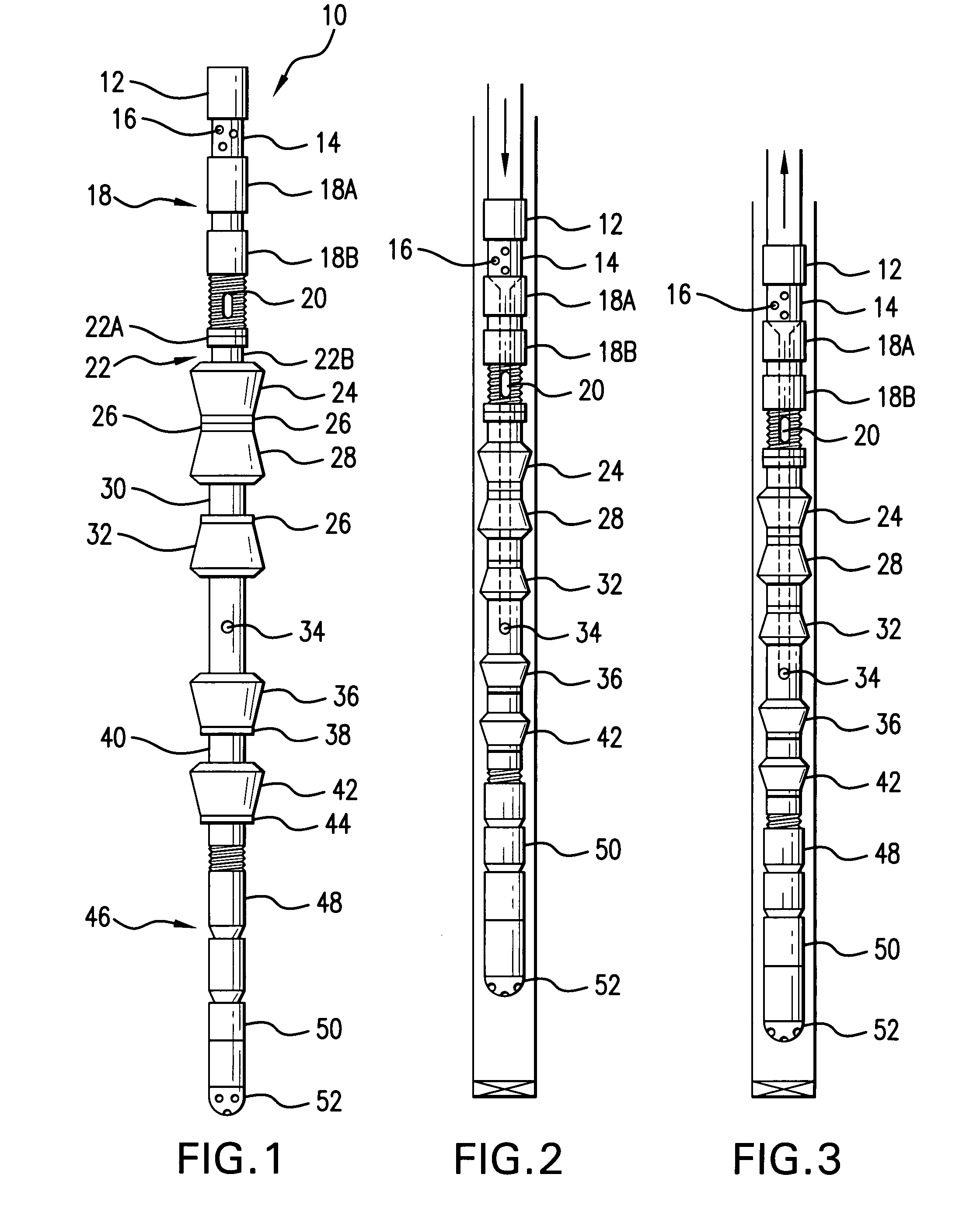Method for simultaneous removal of asphaltene, and/or paraffin and scale from producing oil wells
a technology of asphaltene and paraffin, which is applied in the direction of well accessories, transportation and packaging, sealing/packing, etc., can solve the problems of affecting the effectiveness and affecting the efficiency of well production, and requiring extensive well shutdown time, so as to increase the output flow of well, and increase the effect of well outpu
- Summary
- Abstract
- Description
- Claims
- Application Information
AI Technical Summary
Benefits of technology
Problems solved by technology
Method used
Image
Examples
example 1
Preparation of the aqueous cleaning emulsion
[0098]Seven pounds of conditioned water (prepared by passing through a CARE FREE water conditioner) are added to seven pounds of detergent (CHAMPION'S WATERLESS hand cleaner) and mixed together. This mixture was then mixed together with 40 pounds of kerosene and the resultant materials were blended together for a period of 10 minutes. Another 40 pounds of kerosene was added to the above mixture and again blended for an additional 10 minutes. At the end of this time, additional kerosene was added until the liquid forms an emulsion. This emulsion was blended for an additional 5 minutes. The emulsion was saturated with kerosene, was water soluble and had the thickness of a milk shake.
[0099]Into a 225 gallon tank, there was added 8 gallons of said emulsion and then 100 gallons of catalytic conditioned water was introduced by the use of a nozzle attached to the end of the conditioned water hose. The fluid in the tank was further mixed by circul...
example 2
Treating Oil Wells with the Emulsion
[0100]Using the procedure set forth in Example 1, six batches of emulsion were prepared and used to treat six individual partially / fully plugged oil wells in the Midway Sunset Field near Taft, Calif.
[0101]In each case, the emulsion from the 225 gallon tank was pumped into the well bore through the annuli thereof. After the emulsion was emptied from the tank, 40 gallons of conditioned water was pumped into the well. The emulsion in the well bore was allowed to circulate for 72 hours and then high pressure steam was used to displace said emulsion from the well bore into the surrounding geological formulations. Each well was placed back in operation / production. The average production increase was 34 barrels per day / 6 wells or an average of 5.67 barrel increase / day / well.
example 3
Treating Oil Wells with the Emulsion in Combination with Surge / Pressure Wash Tool
[0102]Following the procedures set forth in Examples 1 and 2, the well was not returned to production, and the emulsion remained in the well. The surge / pressure wash tool was placed at the end of the tubing string and run into the well. Then an additional 100 barrels of emulsion fluid was allowed to gravity flow into the well through the annulus valve in the well head. The emulsion followed the wash tool down the well. When the wash tool reached the slotted liner or the perforated zone, the wash tool began to float indicating the well was still plugged. After a short time the wash tool reached the bottom of the well. Then it was moved up and down the length of the derrick (45 feet) thus promoting a suction in the upward movement of the wash tool, below the wash tool. The tubing string and wash tool on its own weight returns to the bottom of the well. The emulsion entered the tubing string and wash tool ...
PUM
| Property | Measurement | Unit |
|---|---|---|
| distance | aaaaa | aaaaa |
| period of time | aaaaa | aaaaa |
| distance | aaaaa | aaaaa |
Abstract
Description
Claims
Application Information
 Login to View More
Login to View More - R&D
- Intellectual Property
- Life Sciences
- Materials
- Tech Scout
- Unparalleled Data Quality
- Higher Quality Content
- 60% Fewer Hallucinations
Browse by: Latest US Patents, China's latest patents, Technical Efficacy Thesaurus, Application Domain, Technology Topic, Popular Technical Reports.
© 2025 PatSnap. All rights reserved.Legal|Privacy policy|Modern Slavery Act Transparency Statement|Sitemap|About US| Contact US: help@patsnap.com


